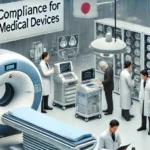

Future Trends in Refurbished Medical Devices
The refurbished medical devices market has emerged as a critical segment of the healthcare industry, driven by the need for cost-effective, high-quality equipment amid rising healthcare demands. As we look toward the future—particularly into 2025 and beyond—several trends are poised to shape the landscape of refurbished medical devices. From technological advancements and sustainability initiatives to evolving regulations and global market dynamics, these trends promise to enhance the value, accessibility, and appeal of refurbished equipment for hospitals, clinics, and healthcare providers worldwide. Here’s an in-depth look at the future of this burgeoning industry.
1. Integration of Advanced Technologies
One of the most significant trends in refurbished medical devices is the integration of cutting-edge technologies during the refurbishment process. As original equipment manufacturers (OEMs) like Siemens Healthineers, GE Healthcare, and Philips continue to innovate, refurbishers are upgrading older systems with modern features such as artificial intelligence (AI), cloud connectivity, and enhanced imaging capabilities. For instance, a refurbished MRI scanner from 2025 might include AI-driven diagnostic software that wasn’t available in its original model, improving accuracy and workflow efficiency.
This trend allows refurbished devices to remain competitive with new equipment, bridging the gap between cost and performance. Healthcare providers benefit from access to near-state-of-the-art technology at a fraction of the price, making refurbished systems an attractive option for facilities upgrading their capabilities without massive capital investments.
2. Growth of the Circular Economy
Sustainability is becoming a driving force in healthcare, and refurbished medical devices are at the forefront of this shift. The circular economy model—emphasizing reuse, repair, and recycling—gains traction as hospitals and governments aim to reduce waste and carbon footprints. By refurbishing equipment like CT scanners, ultrasound machines, and patient monitors, the industry extends the lifecycle of devices that might otherwise be discarded, aligning with global environmental goals.
Looking ahead, expect greater collaboration between refurbishers, OEMs, and healthcare providers to create standardized refurbishment protocols that maximize sustainability. In regions like Japan and the European Union, where eco-friendly practices are prioritized, this trend could lead to incentives or certifications for facilities using refurbished equipment, further boosting adoption.
3. Expansion in Emerging Markets
The demand for refurbished medical devices is surging in emerging markets—Africa, Southeast Asia, and Latin America—where healthcare infrastructure is expanding but budgets remain constrained. In 2025 and beyond, refurbishers will increasingly target these regions, offering cost-effective solutions like refurbished X-ray machines, ventilators, and endoscopyDW systems tailored to local needs. Companies like Bond Japan and JAPAN CENTRAL MEDICAL, already active in global exports, are well-positioned to capitalize on this trend.
This expansion will be supported by improved logistics, such as streamlined shipping and local service networks, ensuring that refurbished equipment reaches remote or underserved areas efficiently. As these markets grow, refurbished devices will play a pivotal role in democratizing access to advanced healthcare, narrowing the gap between developed and developing regions.
4. Stricter Regulatory Standards and Certifications
As the refurbished medical device market matures, regulatory oversight is expected to tighten. Agencies like the U.S. Food and Drug Administration (FDA) and Japan’s Pharmaceuticals and Medical Devices Agency (PMDA) are likely to introduce more rigorous standards for refurbishment processes, quality control, and post-sale support. This trend aims to ensure patient safety and device reliability, addressing concerns about the performance of pre-owned equipment.
In the future, certifications from third-party organizations or OEMs could become a benchmark for refurbished devices, giving buyers confidence in their purchases. For example, a refurbished ultrasound system bearing an OEM-approved seal might command higher trust and value. While this may increase costs slightly, it will enhance market credibility and encourage wider adoption across regulated healthcare systems.
5. Rise of Subscription and Leasing Models
Traditional outright purchases of refurbished equipment may give way to more flexible ownership models, such as subscriptions or leasing. By 2025, refurbishers and distributors could offer hospitals the ability to “rent” devices like patient monitors or MRI scanners for a monthly fee, including maintenance, upgrades, and eventual replacement. This trend reduces upfront costs and aligns with the shift toward operational expenditure (OpEx) over capital expenditure (CapEx) in healthcare budgeting.
For smaller clinics or temporary facilities—such as those set up during public health crises—this model provides access to advanced equipment without long-term financial commitments. It also allows refurbishers to maintain a steady revenue stream while ensuring devices remain in optimal condition through regular servicing.
6. Focus on Cybersecurity and Software Updates
With medical devices increasingly reliant on software, cybersecurity is a growing concern. Refurbished equipment, often based on older platforms, must be updated to protect against data breaches and ensure compliance with privacy regulations like GDPR or HIPAA. In the coming years, refurbishers will prioritize integrating robust cybersecurity features—such as encrypted data transmission and regular software patches—into their offerings.
For instance, a refurbished patient monitor from 2025 might receive firmware updates to secure networked connections, a feature not considered in its original design. This trend will be crucial as healthcare systems become more interconnected, ensuring refurbished devices remain viable in a digital-first environment.
Conclusion
The future of refurbished medical devices is bright, driven by innovation, sustainability, and a commitment to affordability. As technology enhances their capabilities, regulations ensure their safety, and new business models broaden their reach, refurbished equipment will become an indispensable part of the global healthcare ecosystem. By 2025, expect a market that not only saves money but also delivers advanced, eco-friendly solutions to meet the evolving needs of patients and providers. For healthcare facilities looking to stay competitive, embracing these trends in refurbished medical devices will be a strategic move toward a more efficient and equitable future.
Add a comment Cancel reply
Related posts


Regulatory Compliance for Refurbished Medical Devices

New vs. Refurbished Medical Devices: Making the Decision

Refurbished Surgical Instruments from Japan: Precision, Quality, and Value
Japan Address
COMFYS JAPAN LLC, R Cube Aoyama 3rd Floor, 1-3-1 Kita-Aoyama, Minato-ku, Tokyo 107-0061,Japan
Africa Address
Comfys International Limited KP Offices, Suite 26 Milimani, Nairobi, KENYA




